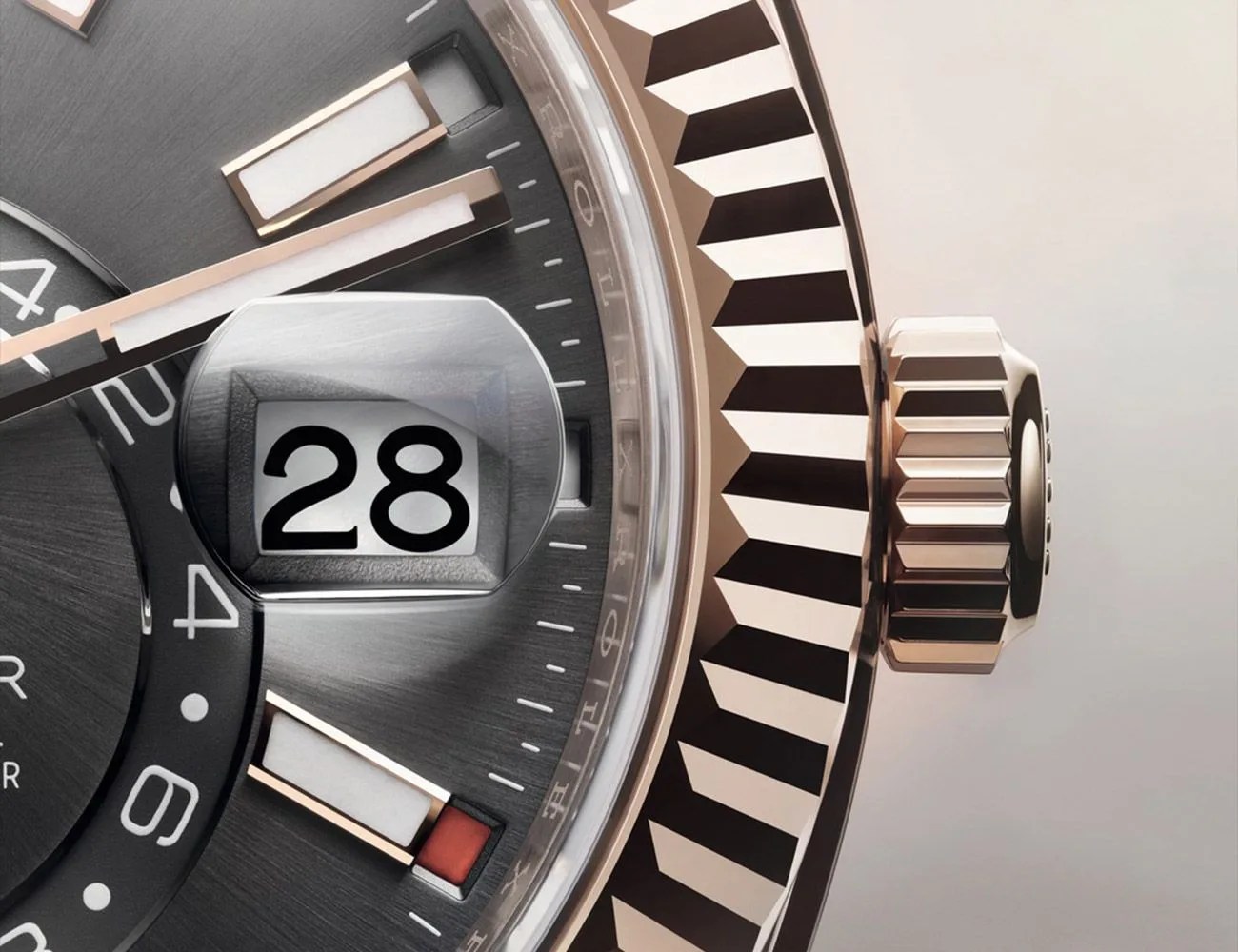Welcome to Watches You Should Know, a biweekly column highlighting important or little-known watches with interesting backstories and unexpected influence. This week: the Rolex Sky Dweller.
Underpinning almost every swanky or blinged-out Rolex is a tool-watch ethos. That means traits like practical design, legibility, robust build, automatic winding and, for the most part, simple functionality. It’s a formula that works exceedingly well and results in conservative watches that rarely require substantial updates. This is exactly why the the Sky Dweller stands out: it’s the brand’s most complicated watch and, frankly, it’s pretty funky for a Rolex.
Aside from the time and date, most complicated Rolex watches might feature a single additional complication such as a GMT or chronograph. You’ll even find a moon phase in the Cellini collection. Introduced in 2012, the Sky Dweller, on the other hand, features not only two complications, including a GMT and the rather involved annual calendar, but also unique ways of displaying information and controlling its functions.
 Rolex
RolexThe annual calendar tracks the month and date, differentiating between months with 30 and 31 days and only needing adjustment once a year, on March 1st. Rolex’s 9001 movement inside accomplishes this with only four additional gears on top of the existing architecture that displays the date — a solution that, by its very simplicity, helps keep the movement nice and robust. The display is equally unique, with an unobtrusive window next to each hour that symbolizes one of the twelve months of the year. For example, the window next to three o’clock will appear black or red (depending on the model) to indicate the month of March.
This is pretty complicated and unconventional for Rolex, but in addition to that is an off-center 24-hour ring to indicate a second time zone. This is a healthy amount of displayed information, and it’s all controlled by a traditional crown — but with a twist, so to speak. The crown is used in concert with the bezel in a system the brand calls Ring Command. In this system, the bezel is used to select a mode (e.g., one of the functions), and the information is then set via the crown.
In the second position (the first is neutral) you can move the main hour hand back and forth in hour intervals independently from the minute hand. The next position moves the minute hand, main hour hand and the 24-hour disc. It might sound a bit confusing, but it becomes intuitive as soon as you use it once or twice, and is in fact a pretty elegant and innovative solution — not to mention handy for traveling. Finally the last position controlled by the bezel lets you set the calendar information (in both directions, it should be noted, unlike many common and lesser watch movements).



